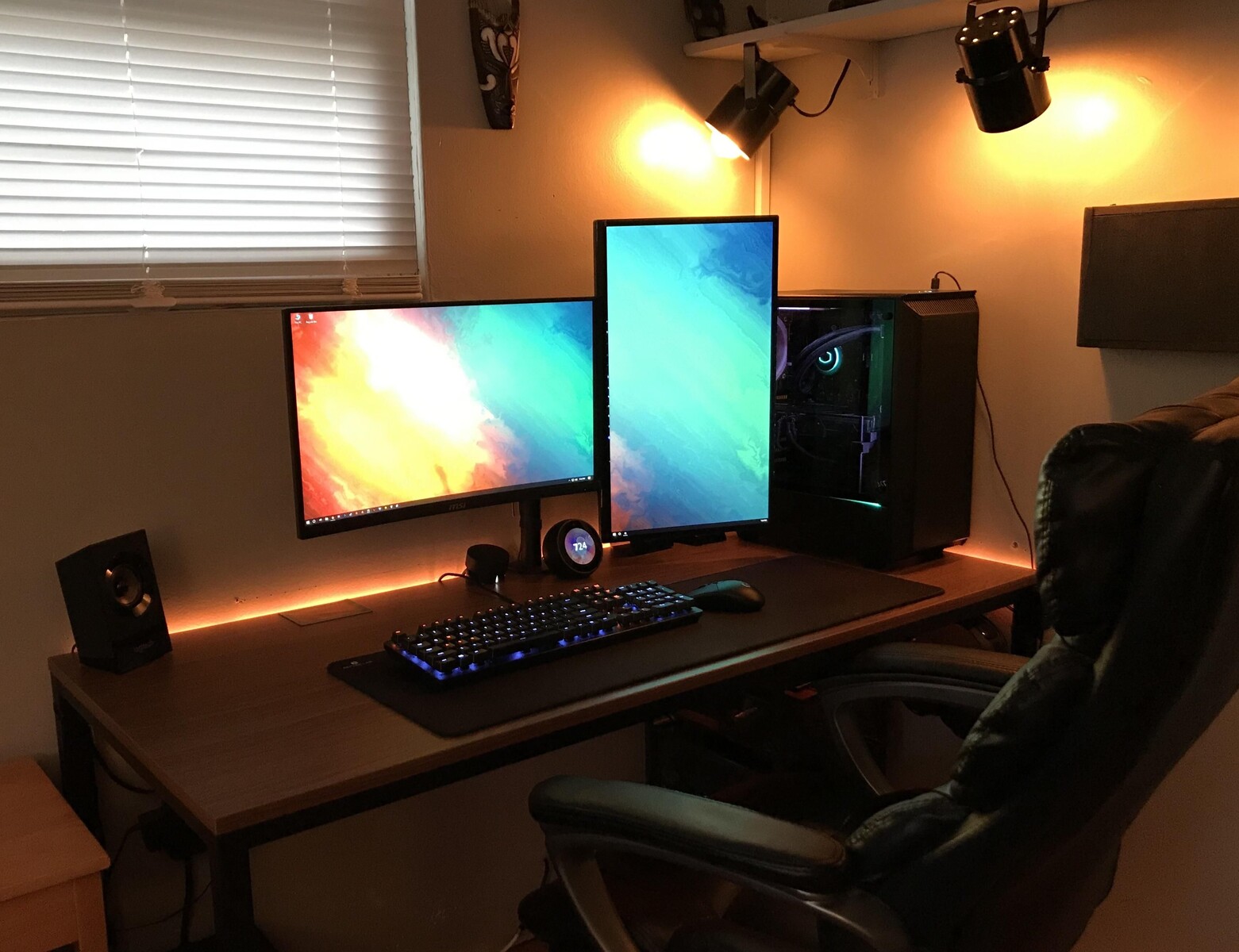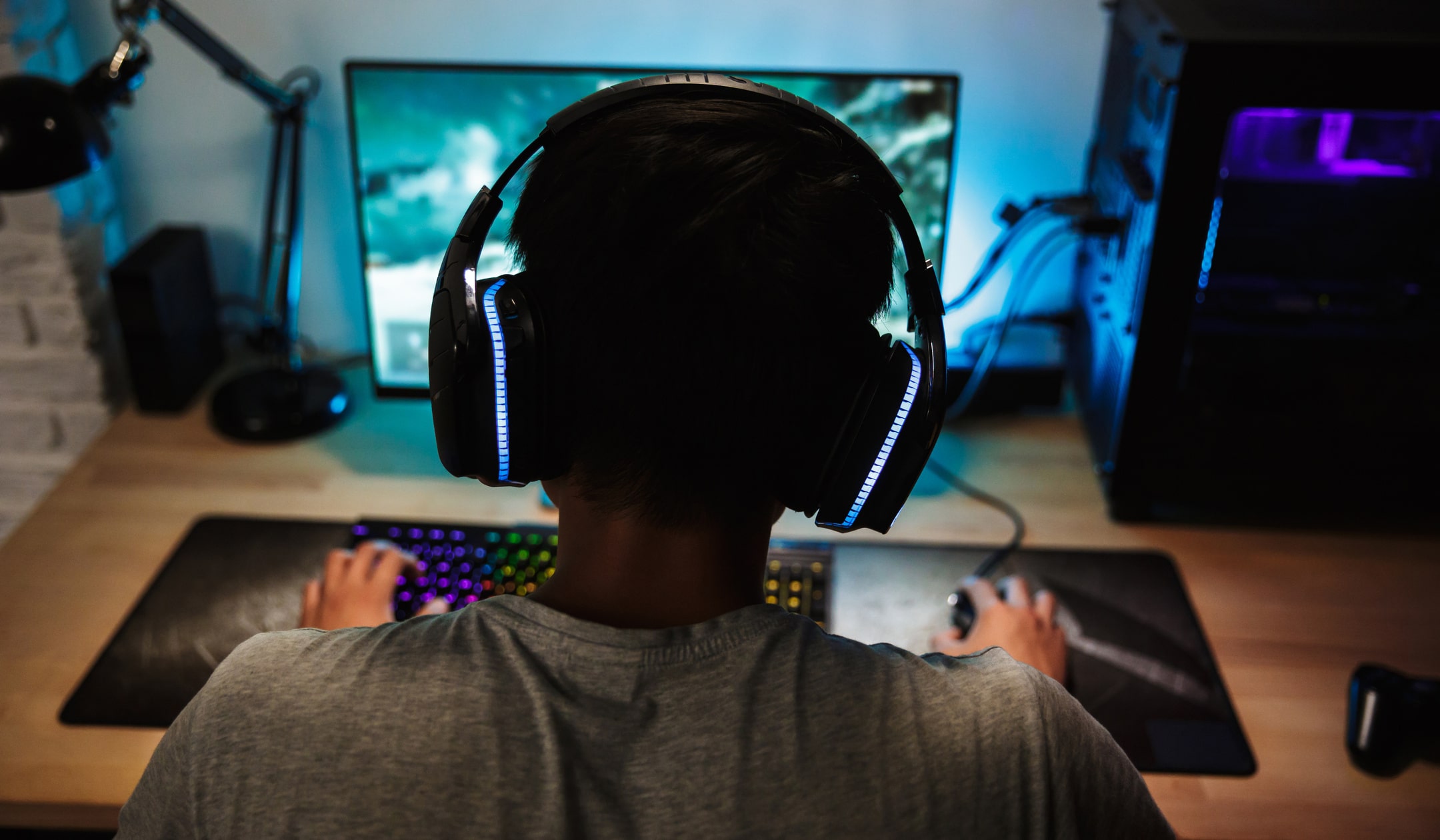What to Consider When Buying a Gaming Monitor
Choosing the right gaming monitor can greatly enhance your gaming experience. With so many options available in the market, it is important to consider several factors before making a purchase.
First and foremost, you need to consider the display resolution. The resolution determines the clarity and sharpness of the image on the screen. For an immersive gaming experience, opt for a monitor with a higher resolution, such as 1440p or 4K. However, keep in mind that higher-resolution monitors may require a more powerful graphics card to deliver optimal performance.
Another crucial factor to consider is the refresh rate. The refresh rate refers to how many times the monitor refreshes the displayed image per second. A higher refresh rate, such as 144Hz or 240Hz, ensures smoother motion and reduces motion blur, resulting in a more fluid gaming experience. Gamers who play fast-paced, competitive games will benefit the most from a high refresh rate monitor.
Response time is also an important consideration. It refers to how quickly the monitor can switch pixels from one color to another. A lower response time, usually measured in milliseconds (ms), minimizes ghosting and motion blur, which is crucial for fast-paced gaming. Aim for a monitor with a response time of 1ms or lower for optimal performance.
The size of the monitor is another aspect to consider. While a larger screen can provide a more immersive experience, it may not be suitable for everyone, especially if you have limited desk space. Consider your gaming setup and personal preferences when choosing the size of the monitor.
Connectivity options are also worth considering. Ensure that the monitor has the necessary ports to connect to your gaming system, such as HDMI or DisplayPort. Additionally, some monitors come with additional features like USB ports or built-in speakers, which can be convenient if you need these functionalities.
Lastly, consider your budget. Gaming monitors come in a wide range of prices, from budget-friendly options to high-end models. Determine how much you are willing to spend and prioritize the features that are most important to you. Remember, investing in a high-quality gaming monitor can greatly enhance your gaming experience and provide you with years of enjoyment.
Budget Options
If you’re looking for a gaming monitor that won’t break the bank, there are several budget-friendly options available. These monitors may not have all the bells and whistles of higher-end models, but they can still provide a decent gaming experience without draining your wallet.
When considering budget options, one important factor to keep in mind is the display size. Smaller monitors, around 24 inches, are generally more affordable compared to larger ones. However, if you value screen real estate and are willing to compromise on other features, you can still find reasonably priced monitors in larger sizes.
In terms of resolution, a full HD (1920×1080) monitor can be a cost-effective choice for budget-conscious gamers. While it may not offer the same level of detail as higher-resolution options, it can still deliver sharp images and vibrant colors for enjoyable gameplay.
When it comes to refresh rate, budget monitors typically offer a standard 60Hz refresh rate. While not as smooth as higher refresh rates, this is perfectly fine for casual gamers or those who are not playing highly competitive games. However, if you do have a slightly higher budget, you may be able to find budget monitors with a 75Hz or even 144Hz refresh rate, providing a more fluid gaming experience.
Response time is another consideration for budget options. While some budget monitors may have a slightly higher response time, such as 5ms, it should still be sufficient for most gamers. Unless you are playing highly competitive games where every millisecond counts, a slightly higher response time shouldn’t be a dealbreaker.
Connectivity options may be limited on budget monitors, but you can still find models with essential ports like HDMI and VGA. These should be sufficient to connect your gaming system. However, keep in mind that additional features like USB ports or built-in speakers may not be available in this price range.
Overall, budget options can offer a great entry point for gamers on a tight budget. They may not have all the premium features, but they can still provide a decent gaming experience without straining your finances. With a little research and comparison, you can find a budget-friendly gaming monitor that meets your needs and delivers enjoyable gameplay.
Mid-Range Options
If you have a slightly higher budget for a gaming monitor, mid-range options can offer a balance between affordability and advanced features. These monitors provide a step up from budget options, offering improved specifications and a better gaming experience without breaking the bank.
One of the key advantages of mid-range monitors is the increase in display resolution. You can expect to find monitors with higher resolutions, such as 1440p (2560×1440) or even ultrawide monitors with a resolution of 3440×1440. These resolutions provide sharper images and greater detail, allowing you to immerse yourself in your favorite games with enhanced visual quality.
In terms of refresh rate, mid-range monitors often offer a considerable upgrade. You can find monitors with refresh rates of 144Hz, 165Hz, or even 240Hz. These higher refresh rates result in smoother motion and reduced motion blur, providing a more fluid and responsive gaming experience, particularly for fast-paced games like first-person shooters or racing games.
Response time is another area where mid-range monitors excel. You can find monitors with a response time of 1ms or lower, minimizing ghosting and motion blur even during fast-moving action sequences. This ensures that the images on the screen are crisp and clear, enhancing your overall gaming experience.
Mid-range monitors also tend to offer a wider range of connectivity options. In addition to HDMI and DisplayPort, you may find monitors with USB ports, allowing you to connect peripherals directly to the monitor. Some models may also include built-in speakers or audio output options for a more immersive audio experience.
When it comes to size, mid-range monitors usually offer a variety of options to choose from. You can find monitors ranging from 24 inches to 32 inches or larger. Consider your gaming setup and personal preferences to determine the optimal size for your gaming needs.
While mid-range options may not offer every feature of high-end gaming monitors, they strike a balance between performance and affordability. These monitors can deliver a significant improvement in visual quality, responsiveness, and connectivity without requiring you to break the bank. Evaluate your specific needs and budget to find the mid-range gaming monitor that provides the perfect balance for your gaming setup.
High-End Options
If you’re willing to invest in the ultimate gaming experience, high-end gaming monitors are the way to go. These top-of-the-line monitors offer cutting-edge features and exceptional performance, catering to the needs of serious gamers and enthusiasts.
One of the standout features of high-end gaming monitors is the display technology. These monitors often utilize advanced panel technologies such as IPS (In-Plane Switching) or VA (Vertical Alignment) for superior color accuracy, wider viewing angles, and deeper contrast. This results in stunning visuals with vibrant colors and impressive detail, making your gaming worlds come to life.
Resolution is another area where high-end monitors excel. With options like 4K (3840×2160) or even higher resolutions, you can witness games in unparalleled detail and clarity. The increased pixel density ensures that every image appears sharp and lifelike, providing an immersive experience like no other.
High refresh rates are a hallmark of high-end gaming monitors. You can find models with refresh rates of 144Hz, 165Hz, or even 240Hz, delivering incredibly smooth and fluid gameplay. These high refresh rates are especially beneficial for competitive gamers who rely on quick reactions and precise movements.
Response time is another area where high-end monitors shine. With response times as low as 1ms, these monitors virtually eliminate motion blur and ghosting, ensuring every frame is rendered with unparalleled clarity. This is particularly important for fast-paced games where split-second decisions can make a difference.
High-end monitors often offer an array of connectivity options to cater to different needs. You can expect to find multiple HDMI and DisplayPort inputs, allowing you to connect multiple devices simultaneously. Many high-end monitors also come with additional features like USB ports for convenient device charging and built-in speakers for immersive audio experiences.
Size is not an issue when it comes to high-end gaming monitors, as they are available in a wide range of sizes. From 27 inches to massive 34-inch ultrawide displays, these monitors provide an expansive viewing area that fills your field of vision and enhances the gaming experience.
While high-end gaming monitors come with a higher price tag, they offer unparalleled performance and features that can elevate your gaming sessions to new heights. The stunning visuals, smoother gameplay, and advanced technologies make high-end options a worthy investment for serious gamers who demand the best.
Factors That Affect Monitor Prices
When shopping for a gaming monitor, it is essential to understand the factors that influence their prices. By considering these factors, you can make an informed decision and find the monitor that best fits your needs and budget.
Display technology is a significant factor that affects monitor prices. Different display technologies, such as TN (Twisted Nematic), IPS (In-Plane Switching), and VA (Vertical Alignment), have varying costs associated with them. TN panels are usually more affordable, while IPS and VA panels offer superior color accuracy and wider viewing angles, making them pricier options.
Resolution is another factor that impacts monitor prices. Monitors with higher resolutions, such as 1440p (2560×1440) or 4K (3840×2160), tend to be more expensive. These higher resolutions result in sharper and more detailed images, providing a more immersive gaming experience.
Refresh rate and response time also play a role in determining monitor prices. Monitors with higher refresh rates, such as 144Hz or 240Hz, are generally more expensive. Similarly, monitors with lower response times, typically 1ms or lower, come at a higher price due to the advanced technologies used to achieve faster pixel refresh rates.
Size is another factor that affects monitor prices. Larger displays, such as 27 inches or ultrawide monitors, are generally more expensive compared to smaller counterparts. The larger screen real estate provides a more immersive gaming experience, but it comes at a cost.
Additional features and functionalities can also influence monitor prices. Monitors with built-in speakers, USB ports, adjustable stands, and other extra features often come with a higher price tag. These additional features can enhance convenience and improve the overall gaming experience, but they may not be necessary for everyone.
Brand reputation and quality also affect monitor prices. Well-known brands that have a reputation for producing high-quality monitors often charge a premium. These brands invest heavily in research and development, ensuring their monitors meet strict quality standards and provide exceptional performance.
Lastly, market demand and availability can impact monitor prices. When a monitor is in high demand or limited supply, its price may increase due to increased competition and scarcity. Conversely, when a monitor is more readily available, its price may be lower.
By considering these factors, you can determine which features are most important to you and prioritize your spending accordingly. Remember, it is essential to strike a balance between your desired specifications and your budget to find a gaming monitor that offers the best value for your money.
Deciding How Much to Spend
When it comes to deciding how much to spend on a gaming monitor, there are a few factors to consider. Setting a budget will help you narrow down your options and find a monitor that strikes the right balance between features, performance, and affordability.
First and foremost, consider your gaming needs and preferences. Are you a casual gamer who plays less demanding games, or are you a hardcore gamer who wants the latest and greatest technology? Understanding your gaming habits will help you determine the level of performance and features you require.
Next, consider your budget and how much you are willing to invest in a gaming monitor. Gaming monitors come in a wide range of prices, from budget-friendly options to high-end models. Evaluate your financial situation and determine how much you can comfortably spend without stretching your wallet too thin.
It’s also important to prioritize the features that matter most to you. If you prioritize a larger display size, you may need to allocate more of your budget for a larger monitor. If you prioritize resolution and image quality, you may want to invest more in a higher-resolution monitor. By understanding your priorities, you can allocate your budget accordingly.
Consider the longevity of your purchase. How long do you expect the gaming monitor to last? If you’re planning on upgrading your setup frequently, it may make sense to choose a more budget-friendly option. However, if you want a monitor that will last for several years and future-proof your gaming experience, it may be worth investing in a higher-end model.
Lastly, do your research and compare different models within your budget range. Look for reviews, feedback from other gamers, and professional recommendations. This will help you gauge the performance and value of the monitors you are considering and make an informed decision.
Remember, spending more on a gaming monitor does not always guarantee a better experience. It’s about finding the right balance between your budget and the features that matter most to you. By considering your gaming needs, priorities, budget, and doing thorough research, you can make an educated decision on how much to spend on a gaming monitor that suits your requirements and provides an enjoyable gaming experience.
Benefits of Investing in a Quality Gaming Monitor
Investing in a quality gaming monitor can significantly enhance your gaming experience, offering a range of benefits that make it a worthwhile investment for dedicated gamers.
First and foremost, a high-quality gaming monitor provides superior image quality and clarity. With higher resolutions like 1440p or 4K, you can enjoy sharper, more detailed visuals that bring your games to life. Richer colors, deeper contrast, and wider viewing angles provided by advanced panel technologies ensure that every scene is rendered with stunning accuracy and immersion.
Another advantage of a quality gaming monitor is the smoother gameplay it delivers. With higher refresh rates, such as 144Hz or 240Hz, the monitor can display more frames per second, resulting in smoother motion and reduced motion blur. This is particularly important for fast-paced games, where every millisecond can make a difference. The responsiveness of a quality gaming monitor can give you a competitive edge and enhance your overall gaming performance.
Low response times are another benefit of investing in a quality gaming monitor. With response times as low as 1ms, these monitors minimize ghosting and motion blur, ensuring that fast-moving scenes are displayed with utmost clarity and precision. This allows for a more immersive and enjoyable gaming experience, free from distracting visual artifacts.
Eye comfort is also a key consideration with a quality gaming monitor. Many high-end monitors feature flicker-free technology and blue light filters, reducing eye strain and fatigue during long gaming sessions. This ensures that you can enjoy extended playtimes without sacrificing your visual health.
Furthermore, a well-designed gaming monitor offers ergonomic features that promote comfortable gaming. Adjustable stands, swivel and tilt options, and VESA mounting compatibility allow you to find the perfect viewing angle and reduce neck and back strain. This ensures that you can game for hours without discomfort, maximizing your gaming sessions.
Connectivity options are another benefit of quality gaming monitors. They typically come with a variety of ports such as HDMI, DisplayPort, and USB, allowing you to connect your gaming system, peripherals, and additional devices with ease. Some high-end models even provide built-in USB hubs or multi-streaming capabilities, enhancing convenience and connectivity.
Lastly, investing in a quality gaming monitor is a long-term investment. These monitors often come with solid build quality and longer warranties. They are built to last and deliver consistent performance for years to come. By choosing a quality monitor, you can future-proof your gaming experience, knowing that it will continue to meet your needs as games and technology evolve.
In summary, a quality gaming monitor offers superior image quality, smoother gameplay, reduced eye strain, ergonomic design, versatile connectivity, and long-term durability. These benefits combine to create a more immersive, enjoyable, and competitive gaming experience. By investing in a quality gaming monitor, you can take your gaming to the next level and truly appreciate the intricate details and excitement of the virtual worlds you explore.
Final Thoughts
Choosing the right gaming monitor is a crucial decision that can greatly enhance your gaming experience. By considering factors such as resolution, refresh rate, response time, size, and budget, you can find a monitor that suits your specific needs and preferences.
While budget options can provide a decent gaming experience at an affordable price, mid-range options offer a step up in performance and features. However, for the ultimate gaming experience, high-end monitors provide cutting-edge technologies and superior performance that caters to serious gamers and enthusiasts.
Factors such as display technology, resolution, refresh rate, response time, size, additional features, brand reputation, and market demand can greatly influence the price of a monitor. Understanding these factors can help you set a budget and allocate your spending accordingly.
Investing in a quality gaming monitor comes with numerous benefits. It provides superior image quality, smoother gameplay, reduced eye strain, ergonomic design, versatile connectivity options, and long-term durability. These benefits combine to create a more immersive, enjoyable, and competitive gaming experience.
Ultimately, the right gaming monitor for you will depend on your specific gaming needs, preferences, and budget. It’s important to do thorough research, read reviews, and consider the advice of fellow gamers to make an informed decision.
Remember, a gaming monitor is an investment in your gaming setup. It’s an opportunity to elevate your gaming experience and fully immerse yourself in the virtual worlds you love. Whether you choose a budget option, a mid-range model, or a high-end powerhouse, selecting the right gaming monitor will undoubtedly enhance your gaming adventures for years to come.

























